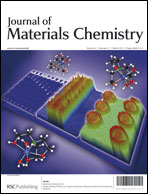Herein we have combined the molecular imprinting technique and thermally-initiated precipitation polymerization to develop novel molecularly imprinted poly(methacrylic acid) nanospheres (PMAA MIPNs) for sustained release of gatifloxacin (GFLX). In the process, ethylene glycol dimethacrylate (EGDMA) and GFLX were used as the cross-linker and template, respectively. The effects of reaction medium and concentration of the monomers such as MAA, EGDMA and GFLX were systematically investigated. Uniform nanospheres with diameter equal to 136.0 ± 8.1 nm and particle dispersion index (PDI) equal to 1.01 were obtained when the total monomer concentration was 1 vol%, the EGDMA content was 70 mol% and the GFLX/MAA ratio was 1 : 15 (mol/mol). The drug loading profiles and in vitro release studies indicated that PMAA MIPNs are better drug delivery vessels and have an improved release profile than non-imprinted ones, which was attributed to the reinforced interaction between GFLX and PMMA side groups due to the specific GFLX molecular arrangement in the PMAA polymeric matrix. Based on these results, these novel PMAA MIPNs are a promising candidate for sustained release of GFLX.

You have access to this article
 Please wait while we load your content...
Something went wrong. Try again?
Please wait while we load your content...
Something went wrong. Try again?


 Please wait while we load your content...
Please wait while we load your content...